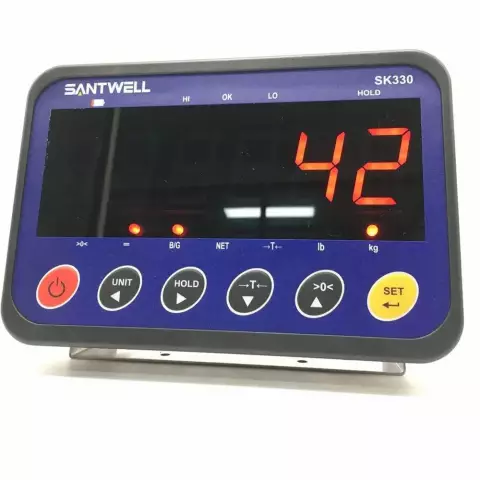- Author Rachel Wainwright [email protected].
- Public 2023-12-15 07:39.
- Last modified 2025-11-02 20:14.
Peak flowmetry

Peak Flow is a functional diagnostic method for determining the peak forced expiratory flow rate. In other words, this method helps to assess how fast a person can exhale air, and thus assess the degree of obstruction (narrowing) of the airways. Peak flowmetry is very important for patients with bronchial asthma and chronic obstructive pulmonary disease, as it allows evaluating the effectiveness of the therapy.
For this research method, there is a special device - a peak flow meter, which is a compact tube with a graduated scale. The modern device is convenient and easy to use, with its help the patient can independently control his condition, calculate the dosage of the drugs taken and prevent an attack of suffocation. Peak flow meters are available for both adults and children. As a rule, children can use the device from 4-6 years old.
The patient independently conducts the study twice a day, and enters all the indicators of peak flowmetry into his schedule, with the help of which it is possible to better understand the features of the course of bronchitis and asthma.
Peak flowmetry
The procedure is done while sitting (or standing). First, you should take a few quiet breaths and then take a deep breath, the mouthpiece of the peak flow meter is tightly wrapped around the lips and a deep forced exhalation is made. In this case, keep the device strictly parallel to the floor surface. For each session, it is required to make at least 3 exhalations at some intervals (2-3 minutes), and select the maximum value.

Peak flowmetry is performed at least 2 times a day - in the evening and in the morning. If a new therapy is selected, the study should be performed three times a day. All indicators of peak flowmetry are recorded in a diary or marked on special charts (which are supplied with the device).
Evaluation of peak flowmetry results
Peak flowmetry rates are calculated individually for each patient, depending on their gender, age and height. For children, only age is considered. At the beginning of using this device for 3 weeks, an individual chart with three colored zones is drawn up. For this, the patient's condition must be stable - without signs of bronchial obstruction. When he reaches the maximum result (which should be close to the norm), it is multiplied by a factor of 0.8 - for example, if the maximum peak flow rate is 400 l / min, then 400 is multiplied by 0.8. We get 320 l / min. A measurement above this value will be in the green zone - that is, the normal level of airway patency. The "yellow zone" is the maximum research score multiplied by a factor of 0.5. That is, we multiply 400 by 0,5 and we get 200 ml / min (this will be the lower border of the yellow zone). In this case, the boundaries of the "yellow zone" will be values from 200 l / min to 320 l / min. If the peak flowmetry indicator is in this zone, then this indicates that it is necessary to correct the therapy with the participation of the attending physician. An indicator less than the lower border of the "yellow zone" refers to the "red zone". If the determined value is in it, then this indicates that the patient has serious respiratory failure, and urgent medical attention is needed. It is necessary to consult with the attending physician about the algorithm of the patient's actions when the indicator is in the "red zone".then this suggests that it is necessary to correct the therapy with the participation of the attending physician. An indicator less than the lower border of the "yellow zone" refers to the "red zone". If the determined value is in it, then this indicates that the patient has serious respiratory failure, and urgent medical attention is needed. It is necessary to consult with the attending physician about the algorithm of the patient's actions when the indicator is in the "red zone".then this suggests that it is necessary to correct the therapy with the participation of the attending physician. An indicator less than the lower border of the "yellow zone" refers to the "red zone". If the determined value is in it, then this indicates that the patient has serious respiratory failure, and urgent medical attention is needed. It is necessary to consult with the attending physician about the algorithm of the patient's actions when the indicator is in the "red zone".which is in the "red zone", you should consult with your doctor in advance.which is in the "red zone", you should consult with your doctor in advance.
Thus, peak flowmetry allows you to control respiratory diseases at home, and this helps to reduce the amount of drugs used. The use of the zone system allows you to timely see the impending danger and prevent emergency hospitalization.
Found a mistake in the text? Select it and press Ctrl + Enter.






